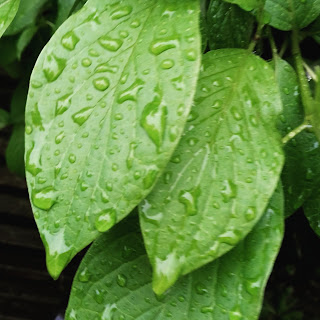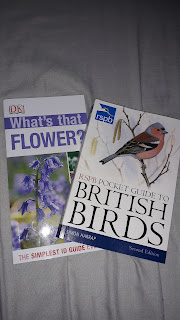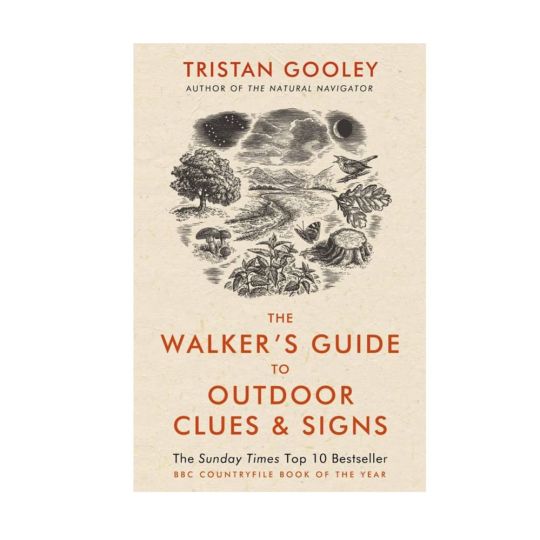From day to day, my experiences with nature and wildlife most often occur in the garden. It starts in the morning, as I wait for my coffee to brew, when I look out on the birdfeeders. The birds, most often House sparrows (Passer domesticus), fly from the shrubbery to the feeders, and back again. Now and then, a few sparrows quibble and quarrel, fighting for a spot. Their calls are a variety of chirps and chatters. My mornings are a wonderful mix of rich coffee aroma and sparrow calls.
Amongst the earthy tones of the sparrows, blue and yellow can sometimes be seen, flitting in for some seed or suet. Both the Blue tits (Cyanistes caeruleus) and the Great tits (Parus major) are more likely to fly in and away quickly, taking what they want and then off into branches and cover. However, they can be coaxed into staying a little longer when a suet filled coconut half hangs from the feeding station.
Blackbirds (Turdus merula) visit too, feeding on the ground below the feeders. They also pluck the berries from the ivy and make a meal out of the garden's snails. There are a number of empty shells out there.
The other day, for the fist time in the garden, I saw a pair of Long-tailed tits (Aegithalos caudatus) on the feeders, which was a thrill. I was thrilled further when I saw a single Long-tailed tit visit again today. This little fluff ball, with its long, narrow tail, was an awesome sight to my eyes; there is great joy and pleasure, and fulfillment, in seeing new visitors. In a world where, as we know, many of our birds are facing greater adversities, I take pride in having a space just outside where these wonderful winged things can come for food, water, and shelter.
A couple of nights ago, I spotted a caterpillar in one of my plant pots, a pot of mixed wildflowers. There are no flowers just yet, but there are some nice green leaves to be chewed upon. And this little green caterpillar (I think a caterpillar of the Angle shades moth, or Phlogophora meticulosa) seemed to have made itself at home, since I saw this single caterpillar again, a night later, in the same pot. I didn't resent the little life for making food of my flowers. I planted them with bees, butterflies, and moths in mind.
As we head towards the warmer and sunnier seasons, I look forward to seeing flowers on the oxeye daisies, the poppies, and the other wildflowers. The oxeye daisies (Leucanthemum vulgare) took a bit of a battering during the recent storms, striving as they do to grow tall, the winds bent and broke some of them down. But, the green life in our gardens is strong and resilient and if it can find a way, it often does. I can not wait for spring and the sight of bees and butterflies on the flowers.
My makeshift bird bath, which I have written about before (here), has been attracting the House sparrows. Perhaps others of the birds have also made use of it, but I've only seen the sparrows in there so far. I can tell you this, when I watched the sparrows drinking from the planter dish, this cheap and unassuming thing, this thing that only cost me a few quid and a little effort, I felt that I had done some good. I felt that I had put more good into this little corner of the world than I ever did from behind a till, a counter, or a desk.
For the peace, joy, and awe that these visitors bring, I make sure the feeders and the bath are clean. I pour in the seed, hang the feeders, rinse out the bath, and then I retreat, giving the birds the space they need. And I watch for a while.
Recently, making use of strong black tape and my mobile phone, I have started live streaming from the birdfeeders on my social media platforms. I can't say that it is gathering an awful lot of viewers, but I have enjoyed seeing the visitors a little more closely. If you would like to see any future livestreams, I will put links to my social media below; make sure your notification settings are set up so that you are notified when I go live.
Social media links
Facebook - https://www.facebook.com/philip.simons.12/
Instagram - https://www.instagram.com/philip.simons.lip/
Twitter - https://twitter.com/PhilipSimons18
Thank you for reading. Just before you go, can I ask that you please consider supporting this blog with a coffee from ko-fi.com - the caffeine keeps me pottering around in the garden!
I resist ad space in this blog, believing that there are greater things than sales that can be generated through writing. However, with writerly ambitions, I must seek some means to support my writing and blogging, and I throw myself on the kindness of readers.
Thank you again for reading and, if you are able to do so, please do take a look at ko-fi.com, and I hope you come back again soon.































